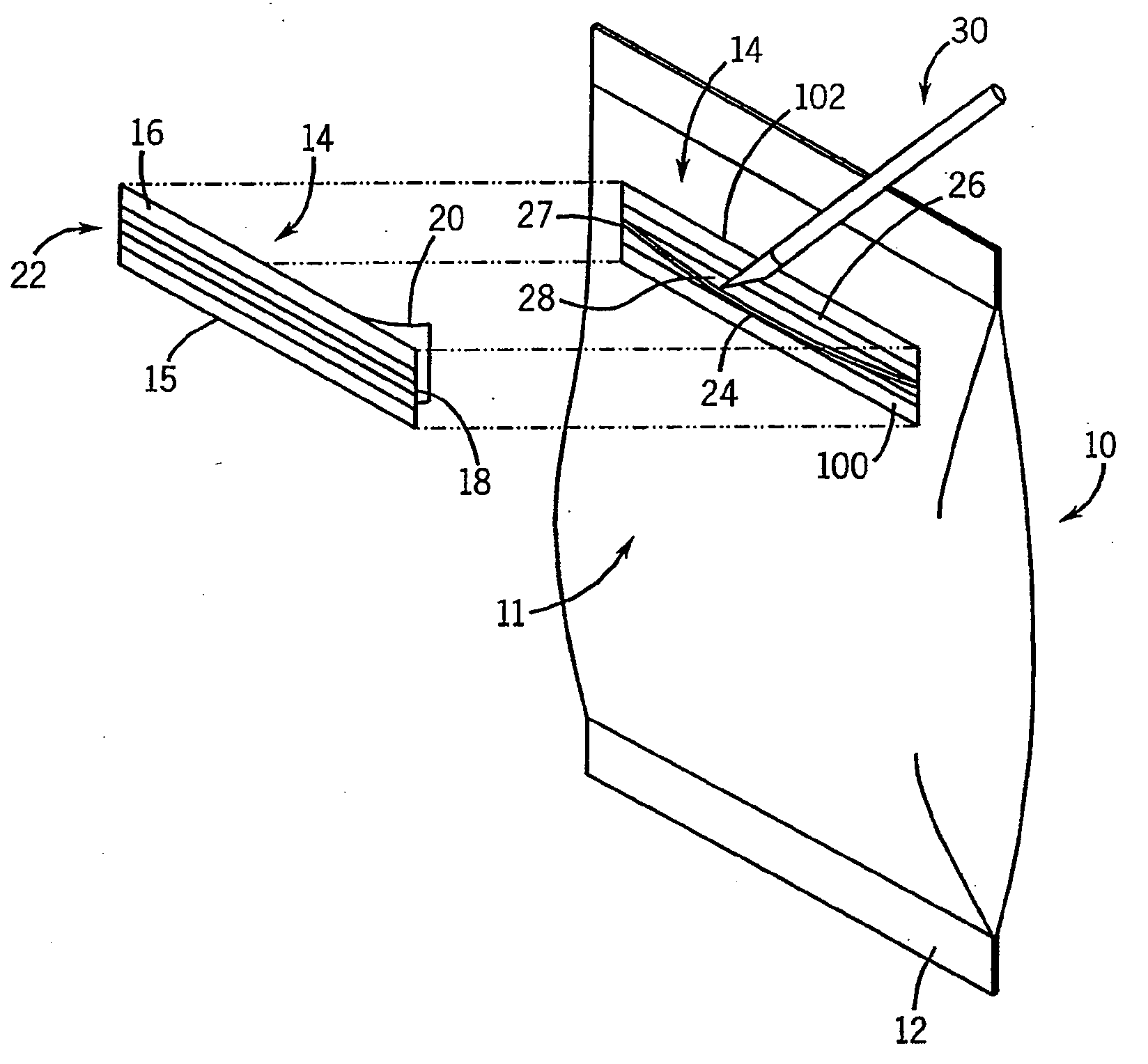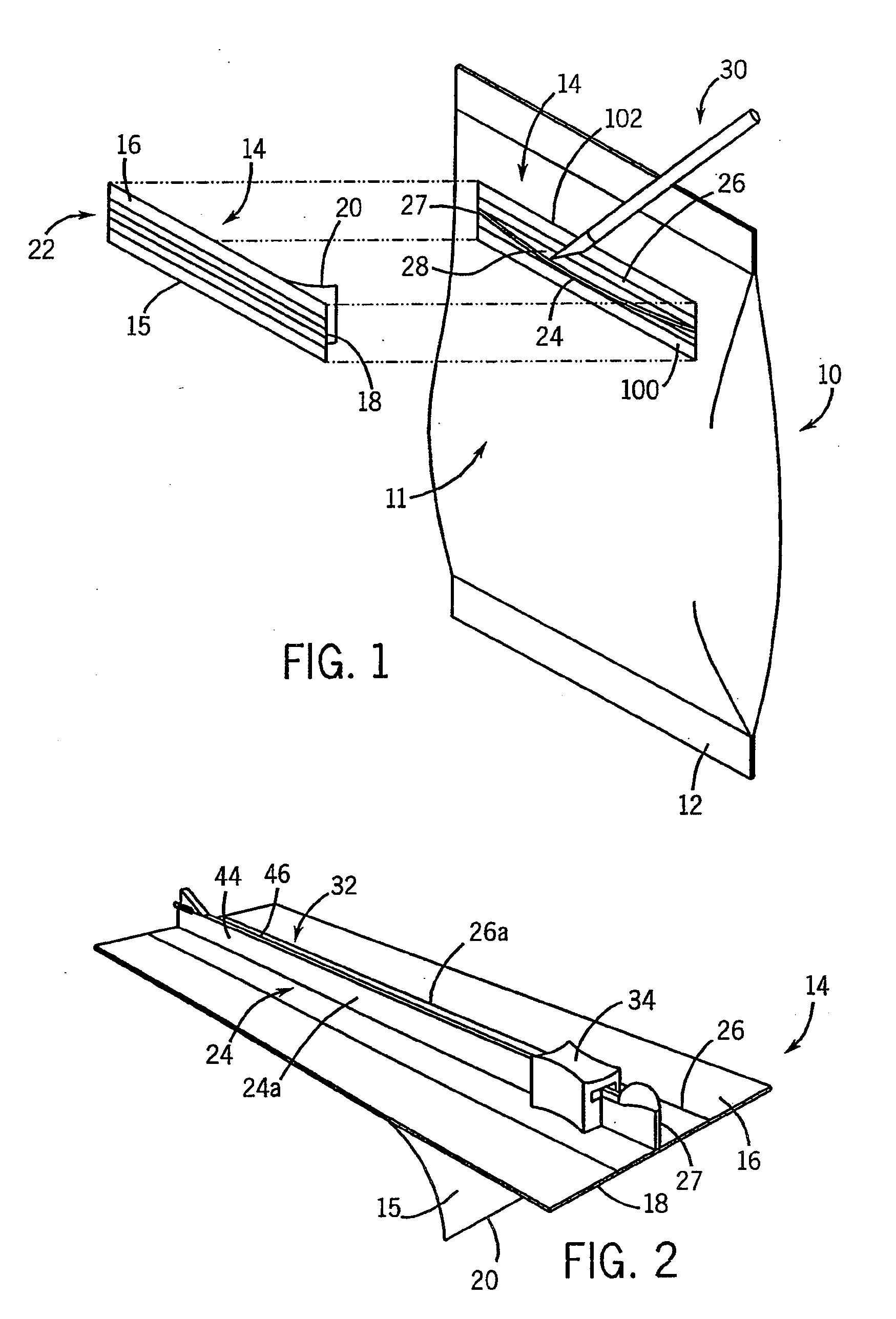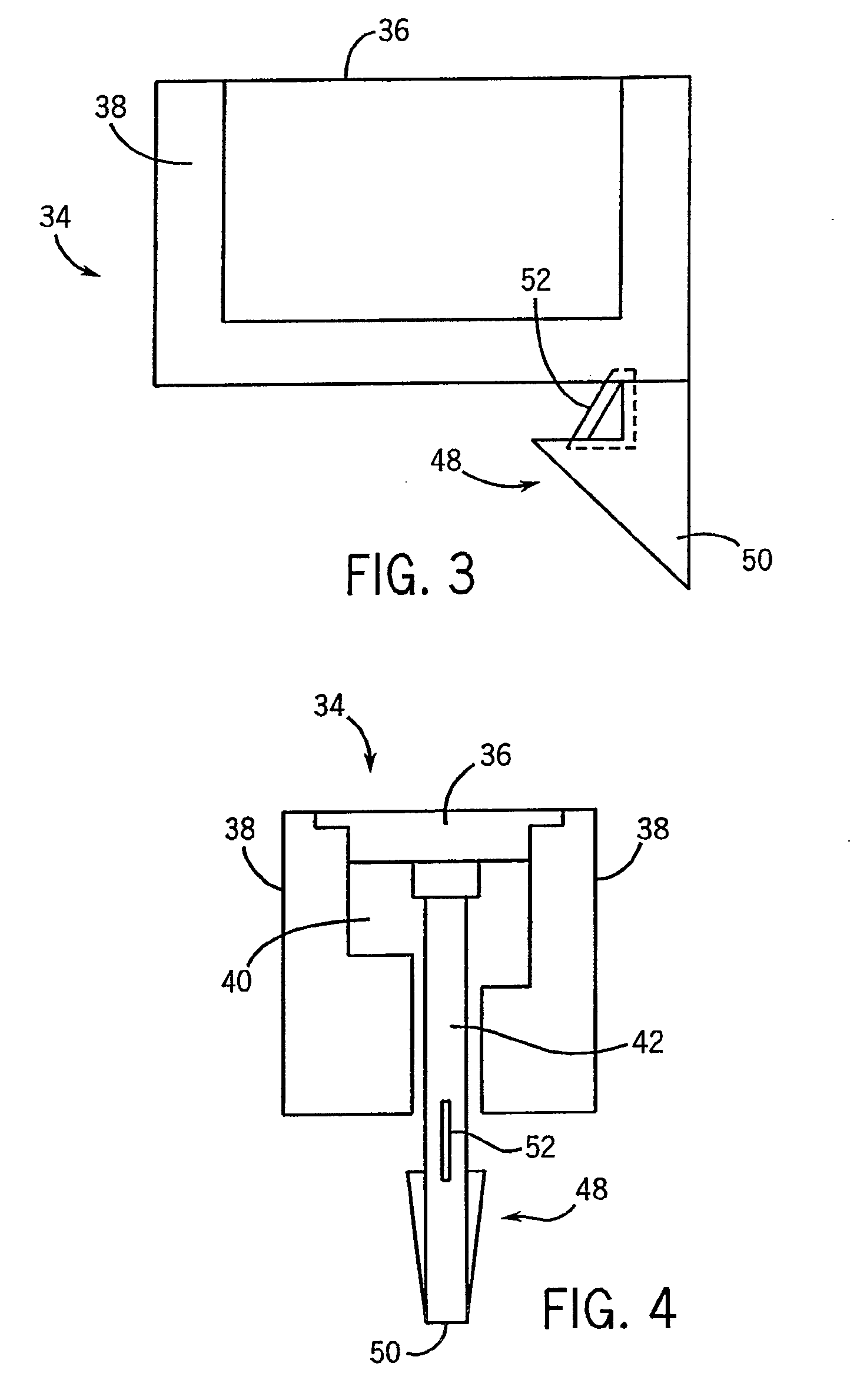Cereal Bag Zipper
- Summary
- Abstract
- Description
- Claims
- Application Information
AI Technical Summary
Benefits of technology
Problems solved by technology
Method used
Image
Examples
Embodiment Construction
[0031]With reference now to the drawing figures in which like reference numerals designate like parts throughout the disclosure, a bag utilized to hold a number of items therein is illustrated generally at 10 in FIG. 1. The bag 10 can be formed of any suitable and easily severable material such as a plastic, paper, or metal foil material, and can have any desired construction that is utilized to hold the item(s) within the bag 10. In one embodiment illustrated in FIG. 1, the bag 10 is sealed at opposed ends 12 to enclose the interior of the bag 10 and hold a number of items therein. Between the sealed ends 12, the structure of the bag 10 has a generally continuous exterior 11 to securely hold the items within the bag 10.
[0032]To enable the bag 10 to be selectively opened and closed to gain access to the items held within the bag 10, a bag resealing system 14 constructed according to the present invention can be secured to the bag 10 at any point between the sealed ends 12. The syste...
PUM
 Login to View More
Login to View More Abstract
Description
Claims
Application Information
 Login to View More
Login to View More - R&D
- Intellectual Property
- Life Sciences
- Materials
- Tech Scout
- Unparalleled Data Quality
- Higher Quality Content
- 60% Fewer Hallucinations
Browse by: Latest US Patents, China's latest patents, Technical Efficacy Thesaurus, Application Domain, Technology Topic, Popular Technical Reports.
© 2025 PatSnap. All rights reserved.Legal|Privacy policy|Modern Slavery Act Transparency Statement|Sitemap|About US| Contact US: help@patsnap.com



